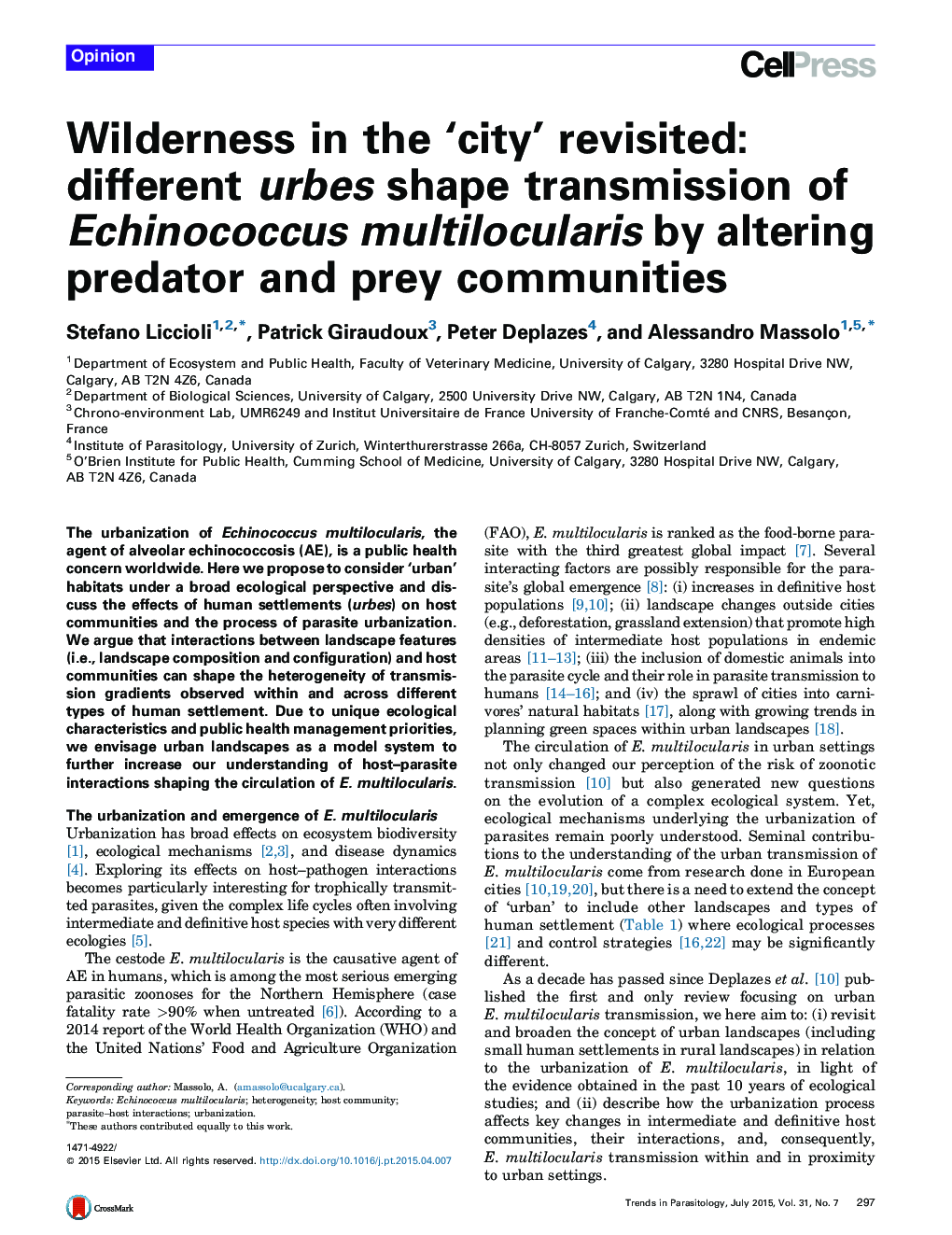| Article ID | Journal | Published Year | Pages | File Type |
|---|---|---|---|---|
| 3422950 | Trends in Parasitology | 2015 | 9 Pages |
•Transmission of Echinococcus multilocularis varies within and across different urban settings.•Urban landscapes affect transmission through changes in predator–prey communities.•Urban landscapes can be a model to investigate host–E. multilocularis interactions.
The urbanization of Echinococcus multilocularis, the agent of alveolar echinococcosis (AE), is a public health concern worldwide. Here we propose to consider ‘urban’ habitats under a broad ecological perspective and discuss the effects of human settlements (urbes) on host communities and the process of parasite urbanization. We argue that interactions between landscape features (i.e., landscape composition and configuration) and host communities can shape the heterogeneity of transmission gradients observed within and across different types of human settlement. Due to unique ecological characteristics and public health management priorities, we envisage urban landscapes as a model system to further increase our understanding of host–parasite interactions shaping the circulation of E. multilocularis.
